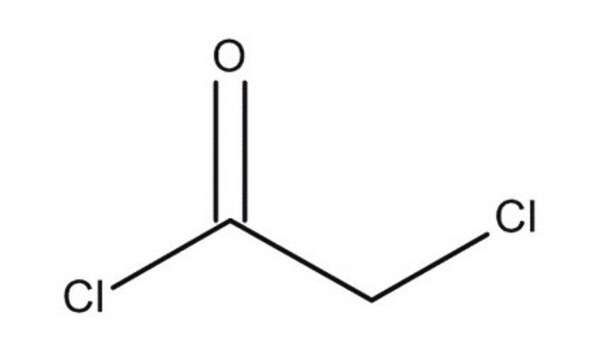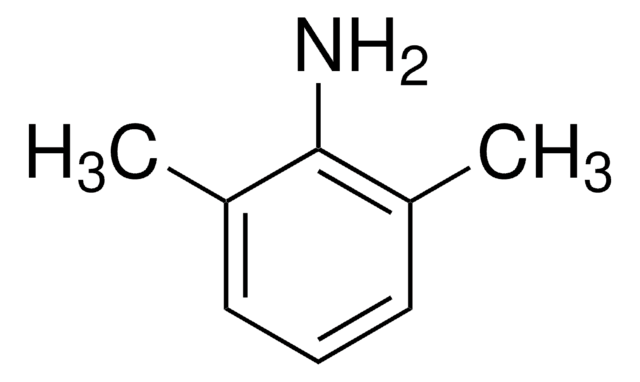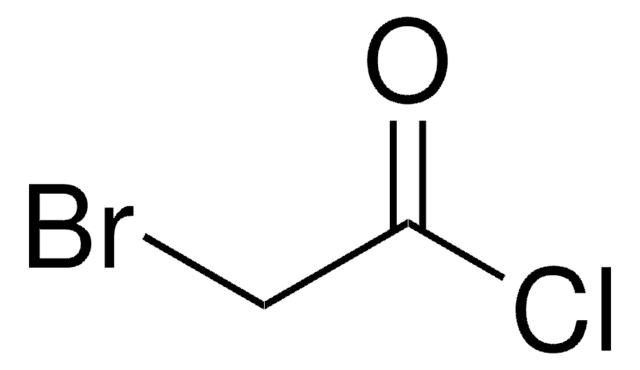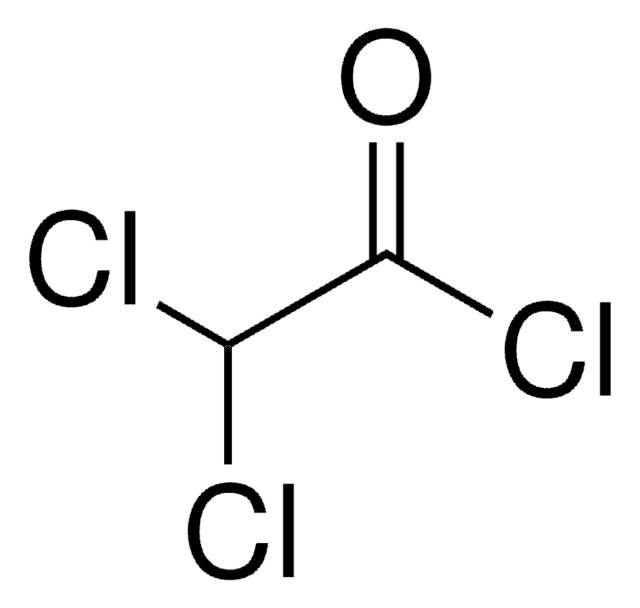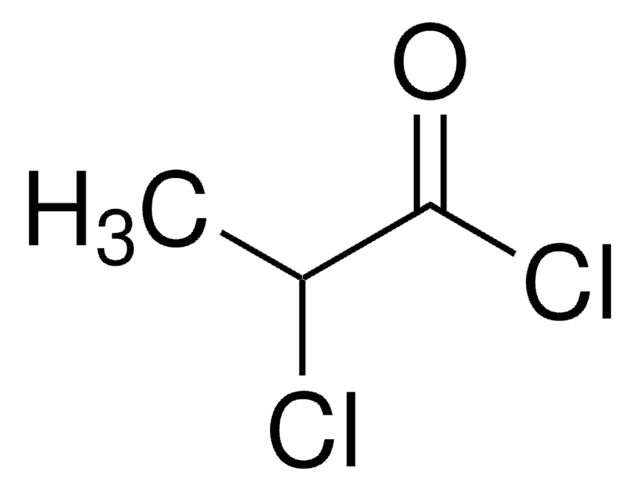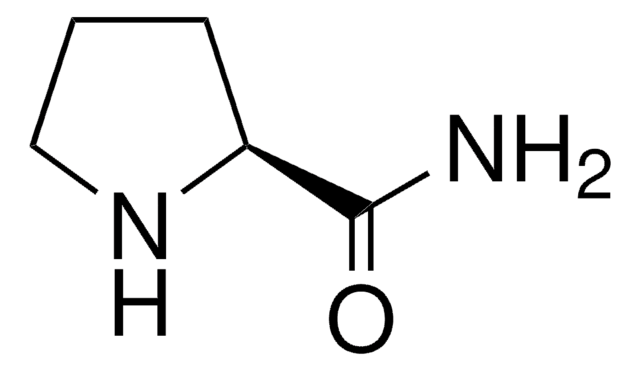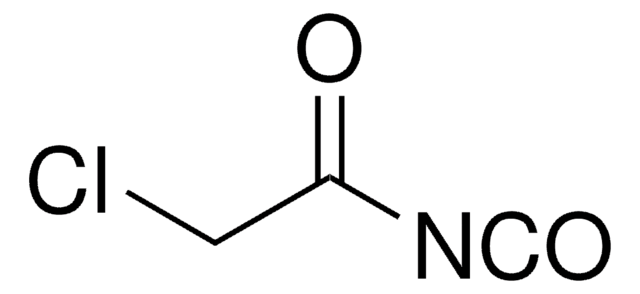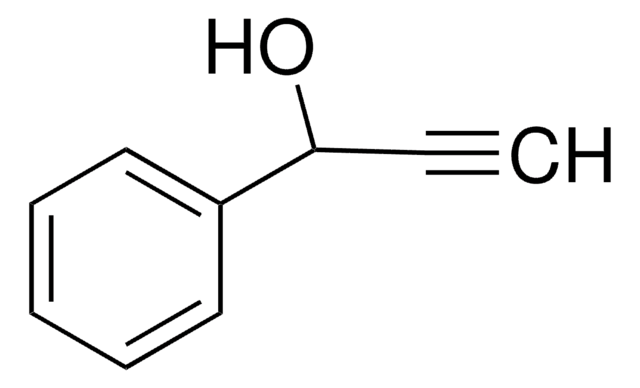104493
Chloroacetyl chloride
98%
Synonyme(s) :
Chloroacetic chloride
About This Item
Produits recommandés
Densité de vapeur
3.9 (vs air)
Niveau de qualité
Pression de vapeur
60 mmHg ( 41.5 °C)
Pureté
98%
Indice de réfraction
n20/D 1.453 (lit.)
Point d'ébullition
105-106 °C (lit.)
Pf
−22 °C (lit.)
Densité
1.418 g/mL at 25 °C (lit.)
Groupe fonctionnel
acyl chloride
chloro
Chaîne SMILES
ClCC(Cl)=O
InChI
1S/C2H2Cl2O/c3-1-2(4)5/h1H2
Clé InChI
VGCXGMAHQTYDJK-UHFFFAOYSA-N
Vous recherchez des produits similaires ? Visite Guide de comparaison des produits
Catégories apparentées
Description générale
Chloroacetyl chloride causes the acylation of cyano-pyrazoline during the synthesis of secondary amine-substituted cyano-pyrazoline derivatives.
Application
Mention d'avertissement
Danger
Mentions de danger
Classification des risques
Acute Tox. 3 Dermal - Acute Tox. 3 Inhalation - Acute Tox. 3 Oral - Aquatic Acute 1 - Eye Dam. 1 - Skin Corr. 1A - STOT RE 1
Organes cibles
Lungs
Risques supp
Code de la classe de stockage
6.1A - Combustible acute toxic Cat. 1 and 2 / very toxic hazardous materials
Classe de danger pour l'eau (WGK)
WGK 3
Point d'éclair (°F)
212.0 °F - closed cup
Point d'éclair (°C)
100 °C - closed cup
Équipement de protection individuelle
Faceshields, Gloves, Goggles, type ABEK (EN14387) respirator filter
Faites votre choix parmi les versions les plus récentes :
Déjà en possession de ce produit ?
Retrouvez la documentation relative aux produits que vous avez récemment achetés dans la Bibliothèque de documents.
Les clients ont également consulté
Notre équipe de scientifiques dispose d'une expérience dans tous les secteurs de la recherche, notamment en sciences de la vie, science des matériaux, synthèse chimique, chromatographie, analyse et dans de nombreux autres domaines..
Contacter notre Service technique
